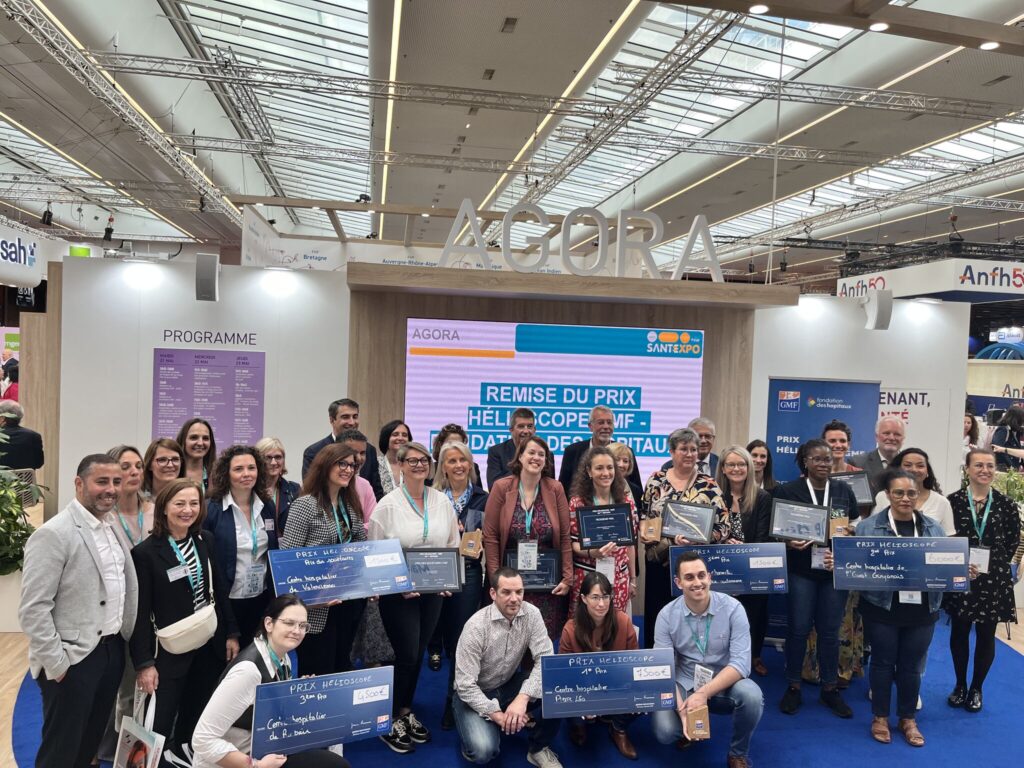Montpellier emergency department: design to enhance the patient experience

Under the direction of Caroline Tricaud, designer project manager in charge of innovation, organization and patient experience at the Centre Hospitalier Universitaire de Montpellier, the main aim of this conference was to present the impact of design in improving the patient experience. It highlighted the various steps taken to specifically improve the patient experience in Montpellier’s emergency department.
Exploration phase
The first phase involves a methodical exploration, including a guided tour of the emergency services, as well as participant observations, which enable the operators to observe conditions on site first-hand and to engage in exchanges. At the same time, interviews were conducted with nursing staff, secretaries and doctors.
Next, an in-depth analysis was undertaken, gathering responses from 114 patients and 124 carers. This approach identified the following main issues:
Interfering flows, such as stretcher crossings, can hinder the flow of traffic and create organizational problems, while disturbing patients who have come for minor problems. In addition, the lack of spatial orientation manifests itself in frequent requests from patients for the location of toilets, disrupting the work of nursing staff. As a result, it is essential to empower patients by providing them with the necessary information.
Patients also expressed dissatisfaction with the lack of information on waiting times. So it’s vital to put in place clear, effective communication systems to address this concern.
Finally, they noted a lack of comfort in the waiting room, particularly in terms of ergonomics, services and visual appeal. It is therefore crucial to improve these aspects in order to create a more pleasant environment for patients.
To sum up, this exploration phase identified the main issues to be addressed in the next phase of the project.
Imagination phase
As part of the imagination phase, co-design workshops were held in collaboration with the teams concerned. During the workshop, they used a model of the hospital to imagine the work needed to accommodate the most appropriate flows for emergency room arrivals. This participative approach enabled us to gather the ideas and perspectives of healthcare professionals, fostering collective reflection and better consideration of operational needs.
At the same time, waiting room visits were also carried out to obtain direct feedback from patients. By visiting the site, they were able to interact with patients, gather their impressions and consider their needs and concerns. This proactive approach has enabled us to integrate the patient’s voice into the thinking process, guaranteeing a needs-based approach.
The aim of this imagination phase was to gather ideas and perspectives from healthcare teams, as well as feedback from patients, in order to fuel their thinking and design solutions that optimally meet the needs of all players involved in the emergency care process.
Experimentation phase
During the experimentation phase, the aim is to test the different solutions envisaged to determine their effectiveness. The approach to separating patient flows was carried out by modifying signage using colored tape according to departments within the facility.
Next, they also focused on improving comfort in the waiting room by offering services such as accessible electrical outlets, a pleasant musical atmosphere, entertaining games, magazines and more comfortable chairs. These improvements are designed to create a welcoming, soothing environment for waiting patients.
Another important aspect of this experimental phase is informing patients about their waiting time. They planned to use personalized SMS messages to keep not only patients informed, but also their loved ones. In addition, the possibility of setting up a waiting room display system was explored, where information on waiting times would be regularly updated, whether by means of a veleda board or a nurse writing down hourly estimates.
Throughout this phase, we make progressive adjustments to arrive at the final solution that best meets the identified needs. Feedback from patients and staff will be closely monitored to ensure that any adjustments made are effective and appropriate.
Evaluation phase to iterate
Following completion of the trial phase, interviews were held with patients and the teams involved to gather their impressions and feedback.
At the same time, a careful observation phase was carried out in the waiting room to examine user behavior. For example, it was noted that telephone sockets were used more frequently than magazines.
Following this assessment, it is imperative to make adjustments to rectify the faulty elements in order to achieve an optimal solution.
Deployment phase
They adopted a phased approach to making changes as part of the evolutionary plan.
Initially, changes were made to the signage, including the use of more soothing colors and the association of specific routes with colors. The aim was to choose colors that would remain visible whatever the lighting conditions.
Next, improvements were made to the comfort and services offered. This includes the acquisition of more comfortable seating furniture, the installation of a secure charging system for telephones, and the addition of coffee tables, lamps and artificial plants. Illustrations were also used to visually represent each stage of the journey.
Finally, efforts have been made to improve information about waiting times. This included displaying the average waiting time before seeing a doctor or leaving the facility on dedicated screens. A system for sending automated SMS messages to patients and their relatives was envisaged, and legal and technical considerations necessitated careful thought to define the organizational arrangements and types of information that could be sent to patients. In addition, a display has been set up to indicate the reasons for waiting, such as the number of professionals present and the number of patients seen per day.
One of the main objectives for the second half of 2023 is to complete the deployment of all the initiatives arising from this issue, as well as empowering the players in the field.

At Moment Care we have the Mint solution, a digital entertainment and information platform with hundreds of content features. Our platform is designed to make patients’ waits more pleasant during their stay in a healthcare facility.
Suggestions

How do e-learning and entertainment enhance the patient experience in hospitals?
E-learning and entertainment enrich patients’ hospital experience. Here’s how it works

The hospital of tomorrow: patient-centric
The hospital of tomorrow puts the patient experience at the heart of care, thanks to advances in safety, fluidity and innovation.
These pillars are redefining hospital care.

Prix Hélioscope-GMF 2024 at SantExpo
Prix Hélioscope-GMF 2024 at SantExpo At SantExpo 2024, the twenty-sixth edition of the Helioscope-GMF Awards took place on May 23,


